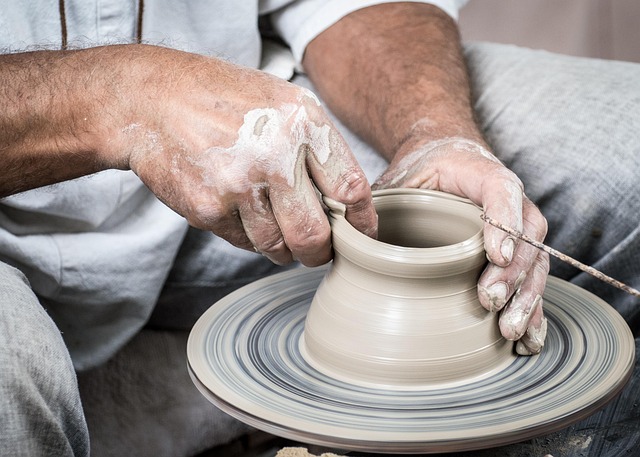# The Aesthetic Evolution: How AI Art is Redefining Visual Narratives and Cultural Expression
Artificial Intelligence (AI) has rapidly infiltrated various aspects of society, and the art world is no exception. As technology advances, the intersection of AI and art is not merely a trend but a profound evolution that is reshaping visual narratives and cultural expression. This article delves into the transformative impact of AI on art, exploring how it redefines creativity, democratizes artistic expression, and challenges traditional notions of authorship.
## The Redefinition of Creativity
In the realm of art, creativity has long been perceived as a distinctly human trait. However, AI challenges this notion by generating artwork that rivals, and in some cases surpasses, human creativity. Algorithms trained on vast datasets of existing art can create original pieces that reflect or blend various styles and techniques. For instance, tools like OpenAI’s DALL-E and DeepArt leverage neural networks to produce stunning images based on textual descriptions or existing artworks. This capability raises essential questions about the nature of creativity itself. Is creativity an exclusive human domain, or can it be replicated or even enhanced by machines?
Artists today are increasingly using AI as a collaborative tool rather than viewing it as a competitor. By integrating AI into their creative processes, they can explore new artistic avenues and push the boundaries of traditional art forms. For example, generative art, created through algorithms, allows artists to produce complex patterns and visuals that would be nearly impossible to achieve manually. This collaboration between human intuition and machine learning results in a dynamic interplay that enriches the artistic landscape, inviting viewers to experience art in innovative ways.
## Democratization of Artistic Expression
The emergence of AI in art has significantly democratized the creative process. In the past, access to artistic tools and education often dictated who could create art. However, AI-powered platforms now enable individuals without formal training to engage in artistic expression. Software applications that utilize AI algorithms allow users to generate art with minimal technical skill, effectively lowering the barriers to entry. This shift empowers a broader range of voices and perspectives, fostering diversity in artistic expression.
Consider the role of social media in this transformation. Platforms like Instagram and TikTok have become crucial for artists to showcase their AI-generated works, reaching global audiences without the need for traditional galleries or exhibitions. Emerging artists can gain recognition and build communities around their work, irrespective of their background or resources. This democratization not only enriches the art world but also reflects the cultural zeitgeist, as diverse narratives and experiences are brought to the forefront.
Moreover, AI tools can analyze trends and preferences, providing artists with insights into what resonates with audiences. By harnessing data, creators can tailor their work to reflect contemporary issues and themes, ensuring that their art remains relevant and impactful. This adaptability fosters a more vibrant artistic ecosystem, where cultural expression evolves in real-time, responding to societal changes and collective sentiments.
## Challenges to Traditional Notions of Authorship
As AI-generated art gains prominence, it inevitably raises questions about authorship and ownership. Traditionally, the artist’s identity has been central to the interpretation of art. However, when a machine generates a piece, who is the true creator? Is it the programmer, the user who inputs the parameters, or the AI itself? This dilemma complicates the very foundation of artistic attribution and challenges the established norms of the art world.
Legal frameworks are struggling to keep pace with these developments. Current copyright laws often do not adequately address the complexities of AI-generated works. For instance, if an AI creates a painting that is sold for a significant sum, determining who holds the copyright becomes a contentious issue. As courts and lawmakers grapple with these challenges, the art community must also engage in discussions about the ethical implications of AI in art-making.
Furthermore, the proliferation of AI-generated art raises concerns about originality and authenticity. Some critics argue that reliance on AI may lead to a homogenization of artistic styles, as algorithms often draw from existing works to create new pieces. This reliance on historical data could stifle innovation and reduce the uniqueness of artistic expression. Conversely, proponents of AI argue that it can serve as a catalyst for new ideas, pushing artists to explore uncharted territories and redefine their practices.
## Conclusion: A New Era of Artistic Exploration
The aesthetic evolution brought about by AI is undeniably reshaping the landscape of art and cultural expression. By redefining creativity, democratizing artistic expression, and challenging traditional notions of authorship, AI is paving the way for a new era of artistic exploration. As artists and technologists continue to collaborate, the boundaries of what constitutes art will expand, inviting diverse narratives and innovative forms of expression.
Ultimately, the integration of AI in the art world is not an end but a beginning. It invites us to reconsider our relationship with creativity and the role of technology in shaping human expression. As we navigate this brave new world, one thing remains clear: the dialogue between AI and art is just beginning, and its implications will resonate across generations, forever altering the fabric of visual narratives and cultural expression.

